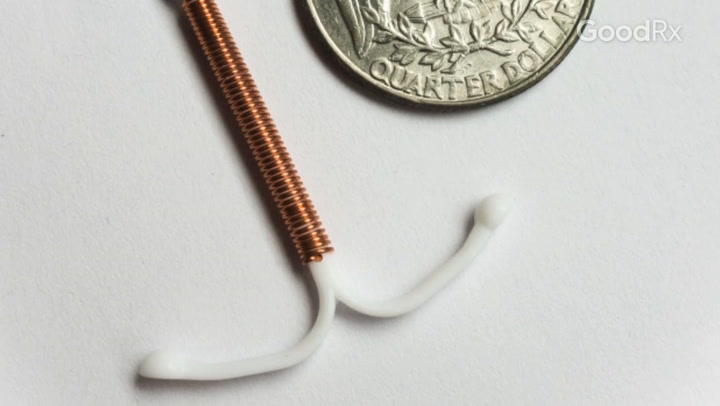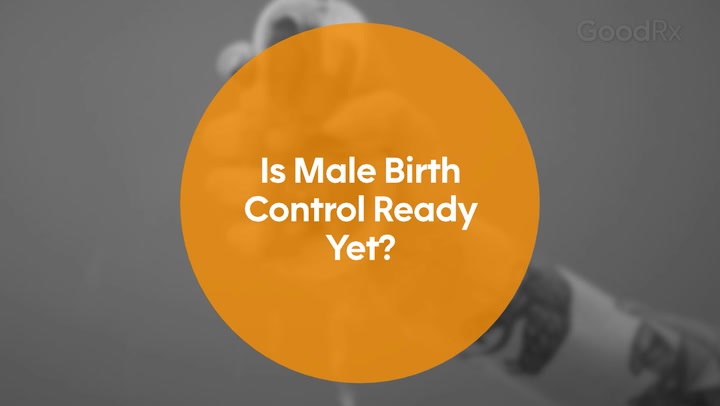
5 Steps to Getting Birth Control Without Seeing a Doctor
Key takeaways:
You don’t always need to see a doctor to get birth control.
In 34 states and Washington, D.C., pharmacists can now legally prescribe birth control.
In 2023 the FDA approved an over-the-counter (OTC) birth control pill, but it’s not in store aisles yet. Opill (norgestrel) will be available on shelves in early 2024.
Access savings on related medications

Going to your doctor’s office to get birth control can be a challenge. But in the past decade, many states have made it easier than ever to get birth control, such as the pill, the patch, the ring, and even the Depo shot. And in July 2023, the FDA approved the first over-the-counter birth control pill. Opill (norgestrel) is set to be available in stores in early 2024.
Until Opill is available for purchase, you’ll still need a prescription for hormonal birth control. But, in some states, pharmacists can now prescribe birth control. This means you can get birth control from your local pharmacy without seeing a doctor. Here’s how.
1. Check to see if your state allows pharmacists to prescribe
First, check to see if you live in a state where pharmacists can prescribe birth control (see the list below).
Search and compare options
Be aware that different states have different laws when it comes to pharmacist prescribing. For example, in some states you have to be over 18 years old. In other states, pharmacist-prescribed birth control is available for people of all ages.
2. Find a pharmacy where pharmacist prescribing is available
Even if your state allows pharmacist prescribing, that doesn’t mean it’s available at every pharmacy. Before you go, call or check online to see if your pharmacy has a pharmacist who can prescribe birth control — and to make an appointment (if you need one).
If your usual pharmacy doesn’t offer birth control prescriptions, you can use this online tool to find a pharmacy near you that provides these services.
3. Ask about costs
Most pharmacies charge a fee to get a pharmacist prescription for birth control — usually $50 or less. Make sure to check in on what fees you’ll need to pay, so you aren’t surprised when you get to the pharmacy.
Keep in mind: Insurance usually doesn’t cover these fees, but they may be HSA eligible.
4. Visit your pharmacy and meet with the pharmacist
The next step is to go to the pharmacy, and meet with your pharmacist. At the pharmacy, you’ll answer some questions and have a blood pressure check to make sure it’s safe for you to use hormonal contraception.
While your pharmacist will be able to help you decide on birth control, it’s a good idea to know about your birth control options before you go. This can help you choose a birth control method that’s a good match for your personal preferences.
5. Get your birth control
Once you have a prescription, you’re ready to get your birth control.
Health insurance will likely cover part (or all) of the cost of your birth control. If you don’t have health insurance, your pharmacist can work with you to find a type of birth control you can afford. And if you’ll be taking an oral birth control pill, keep in mind that GoodRx can sometimes get a better price than your insurance copay.
Can I get pharmacist-prescribed birth control in my state?
It depends on where you live. A growing number of states allow pharmacists to prescribe hormonal birth control. But there are still many states where this isn’t an option yet.
Here’s where pharmacist-prescribed birth control is — and is not — available.
Available to people of all ages:
California
Hawaii
Idaho
Illinois
Maryland
Minnesota (under 18 only with a previous prescription from a doctor)
Nevada
New Hampshire
New Mexico
North Carolina (under 18 only with parent/guardian consent)
Oregon
South Carolina (under 18 only with a previous prescription from a doctor)
Tennessee (under 18 only if emancipated minor
Vermont
Available to people 18 and over:
Arizona
Arkansas
Colorado
Indiana
Utah
Virginia
West Virginia
Available only with physician partnership:
Michigan
Montana
Nebraska
South Dakota
Washington
Wisconsin
Pharmacist prescribing is approved, but still in progress:
Connecticut
Delaware
Maine
Massachusetts
New Jersey
New York
Rhode Island
Washington, D.C.
Pharmacist prescribing is not available yet:
Alabama
Alaska
Florida
Georgia
Iowa
Kansas
Kentucky
Louisiana
Mississippi
Missouri
North Dakota
Ohio
Oklahoma
Pennsylvania
Texas
Wyoming
Keep in mind that some states require you to see a doctor for a follow-up appointment in 1 to 3 years. And, in certain states (like North Carolina), pharmacists can only prescribe select types of birth control, such as the pill and the patch.
Can I get hormonal birth control over the counter (OTC)?
No. OTC medications are medications that you can get without a prescription. Common examples include allergy pills, pain relievers, and sleep aids. So far, most OTC hormonal birth control is not available for purchase yet. The only exception is emergency contraception (Plan B).
But stay tuned: As mentioned above, in 2023 the FDA approved the first OTC birth control pill — Opill (norgestrel). Opill should be available early in 2024.
It’s also good to know that even though birth control pills aren’t available OTC yet, there are many other types of OTC birth control. These include:
Can I get prescription birth control online?
Yes. There are many options for getting prescription birth control online — including GoodRx Care.
To get birth control online, you meet with a healthcare professional over video or chat. They’ll ask you about your health and help you choose the right birth control. If it’s a good fit, they’ll send a prescription to your local pharmacy. Many services can even deliver it to your home.
Better birth control access: Why it matters
Birth control is one of the 10 greatest public health achievements of the 20th century — right up there with seat belts and clean water, according to the CDC. Here are some of the individual and societal benefits of birth control:
Fewer unintended pregnancies and abortions
Improvements in women’s education and employment
Healthier moms and babies
People also take birth control to manage menstrual symptoms, irregular periods, heavy periods, ovarian cysts, and hormonal imbalances.
New laws have made it easier for many people to get prescription birth control, some people for the first time.
In 2015, Oregon was the first state to let pharmacists prescribe birth control. In that state, 3 out of every 4 pharmacist prescriptions for birth control were to women who hadn’t been using birth control in the past 6 months.
Studies also show that people who are younger and don’t have insurance are more likely to use these programs. And women who get a 1-year prescription for birth control from a pharmacist may be more likely to take the medication as prescribed, and to have fewer unintended pregnancies — compared with women who received a typical 1 to 3 month prescription.
The bottom line
In the past decade, it’s become easier than ever to get birth control in some states. If you live in a state where pharmacists can prescribe medication, you may be able to get birth control without even having to see a doctor.
So the next time you need birth control, remember that your pharmacist may be able to help. Other options include getting a prescription online and having it delivered to your home. Later this year, the first ever over-the-counter birth control pill (Opill) will be available, too.
Why trust our experts?


References
Birth Control Pharmacies. (n.d.). Frequently asked questions.
Birth Control Pharmacist. (n.d.). Policies.
Guttmacher Institute. (2023). Pharmacist-prescribed contraceptives.
Harbarger, M. (2019). Oregon pharmacists wrote 10% of all birth control prescriptions since landmark law passed. The Oregonian.
Kaye, K., et al. (2014). The benefits of birth control in America: Getting the facts straight. The National Campaign to Prevent Teen and Unplanned Pregnancy.
Michels, A. (2017). Birth control available at Colorado pharmacies without visiting a doctor. Fox31.
Morbidity and Mortality Weekly Report. (2001). Ten great public health achievements -- United States, 1900-1999. Centers for Disease Control and Prevention.
National Cancer Institute. (n.d.). Over-the-counter. National Institutes of Health.
Planned Parenthood. (n.d.). How do I get spermicide?
Planned Parenthood. (n.d.). How do I get the sponge?
Rodriguez, M. I., et al. (2020). Association of pharmacist prescription with dispensed duration of hormonal contraception. JAMA Network Open.

























